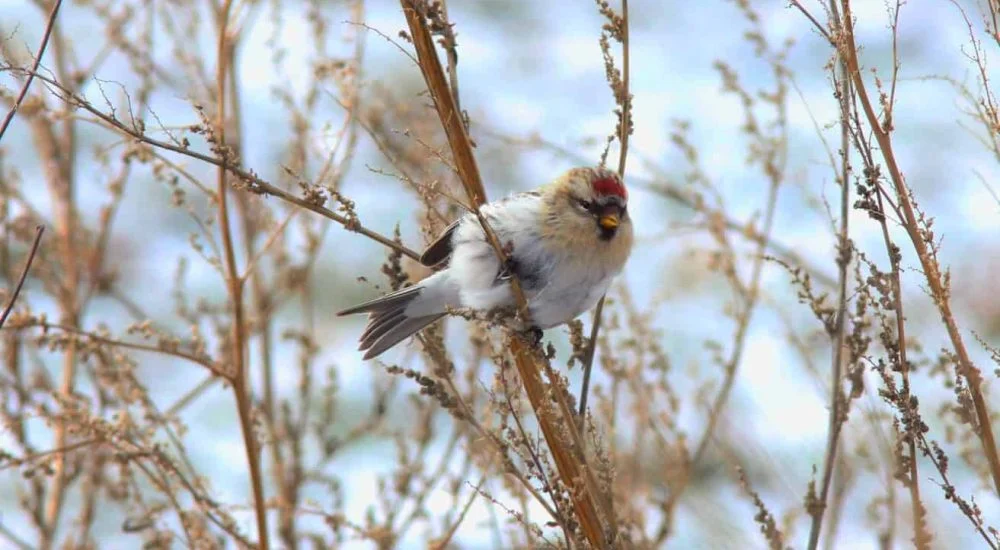
Want to learn more? This book on everything to do with Finches is a fantastic read!
House Finches are the most commonly found species of finch and are the most frequent visitor’s to backyards in the state.
Ohio is classed as having a continental climate with humid weather. There are 83 different state parks across the state and there are 2 different National Parks and 8 Wildlife Refuges.
One good place for spotting finches in Ohio is in Mohican State Forest. Now that we’ve talked a little about the state of Ohio, let’s go more in depth into the wonderful species of finches that can be found there.
Want to attract finches? Take a look at our article!
What Finches can be seen in Ohio?
Table of Contents
1. House Finch
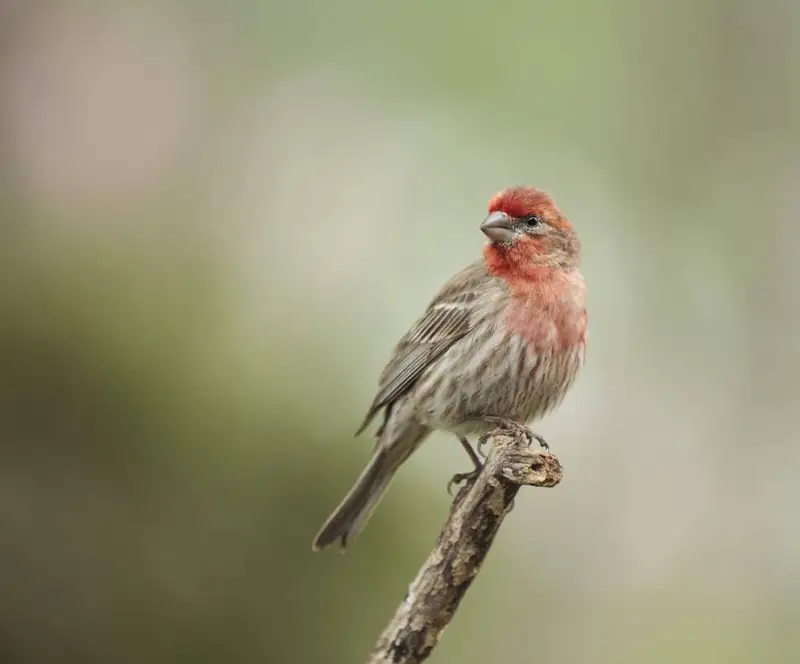
Fun Facts:
- A finch’s diet is dependent on the type of beak they have. House Finches have a seed feeding beak as seeds are their main source of food. The most popular seed for them is the black oil sunflower seed. They also eat certain types of flower buds and fruits, these incluce cherries and thistle.
- House Finches are only very small birds with a small weight range. They range from 16-27g and have only a tiny wingspan of 20-25cm.
Males of this species have a cherry red plumage whilst the females are covered in a variety of streaky brown feathers. These birds have adapted very well to manmade bird feeders and have also been known to scavenge dropped pieces of food on the ground, usually in the form of broken and discarded seed shells.
Both in and out of the mating season, these finches are very social and they will form year-round flocks with around 100 individuals to forage together.
House finches are found all across Ohio and are permanent residents. A favourite seed of these birds is black oil sunflower seeds. They are happy to use both hanging feeders as well as ones with platforms. They are not deterred by feeders swinging in the wind.
2. Purple Finch
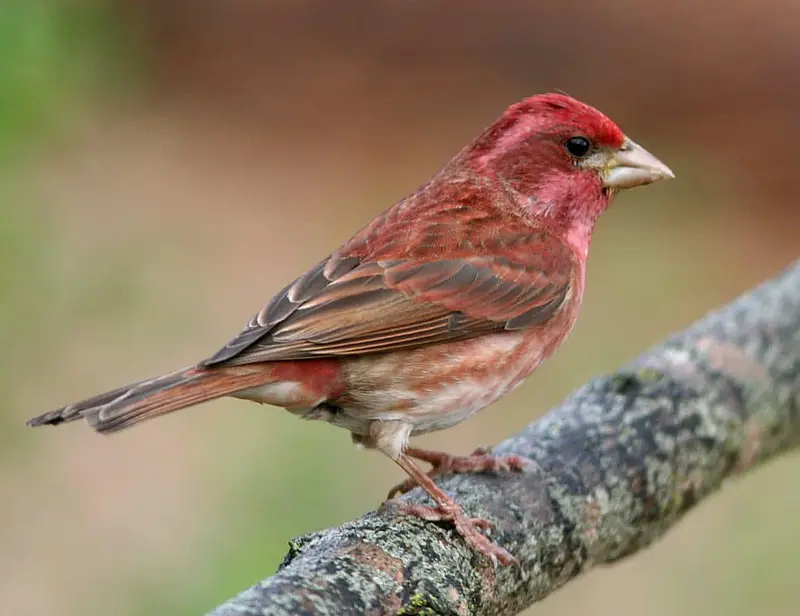
Fun Facts:
- These birds have bills that are designed for breaking different seeds open. Their favourite seeds include black oil sunflower seeds and safflower seeds. They also enjoy eating nectar and occasionally consume flower buds.
- Purple Finches weigh just slightly more than House Finches at 18-32g. They also have very small wingspans which range from 22-26cm.
Male Purple finches are often described as finches that have been dipped in raspberry juice. The females have streaks of white and brown feathers. These finches do show displays of aggression and do these displays rather than attack.
These aggressive acts usually occur over food sources and females are often the victors of these confrontations.
Like lots of other finch species, the females will build the nest for her and her mate whilst the male flies around to protect the area and the female from other males.
Purple finches can be seen across all of Ohio but this is usually only outside the breeding season. if you want to see one of these finches in your garden, make sure to use feeders with perches instead of platforms. Fill these feeders with a variety of seed types.
3. American Goldfinch
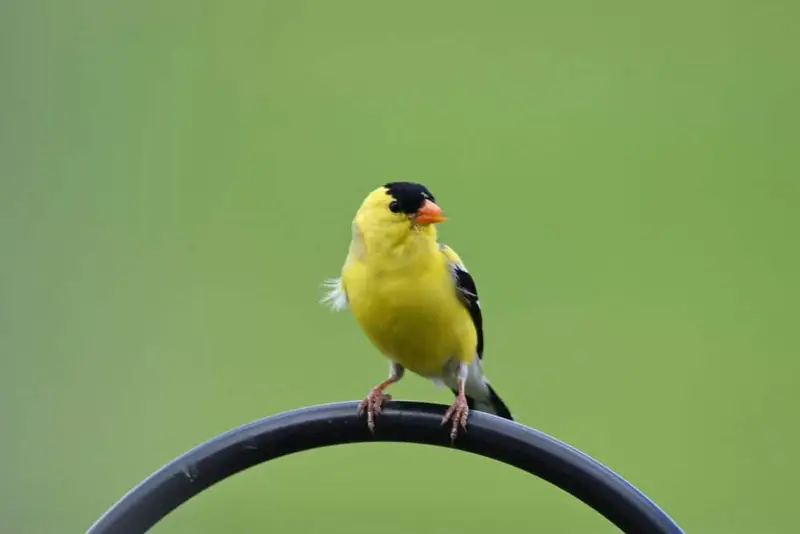
Fun Facts:
- American Goldfinches have a beak designed for eating small seeds. Nyjer seeds being a favourite of theirs. They rarely eat anything outside of the seed family.
- These finches are slightly smaller than the other finches that we’ve looked at, weighing only 11-20g. They also have a very tiny wingspan which measure 19-22cm.
These finches have both sexual dimorphism and seasonal dimorphism. During the breeding seasons males are covered in bright yellow feathers and black wings.
When it reaches winter these feathers become browner in colour. Females also have yellow feathers, they are just a much duller shade.
During the breeding season, courting pairs will fly around and search for a nesting spot together before the female proceeds to build the nest.
Males will fly around the nesting site, making sure to defend the female and ward off other males whilst his mate builds their nest.
They have a variety of calls, the most well-known and distinct one produces what sounds like a spelled out po-ta-to-chip.
Whilst these birds can be seen in all of Ohio for the whole year, they do not tend to spend their breeding seasons in the state so you are not very likely to see one of their nests.
These finches are common garden visitors, especially in winter. They feed on a variety of seeds so make sure to keep your feeders stocked with different seed types. These bird particularly like nyjer seeds and black oil sunflower seeds.
4. Pine Siskin
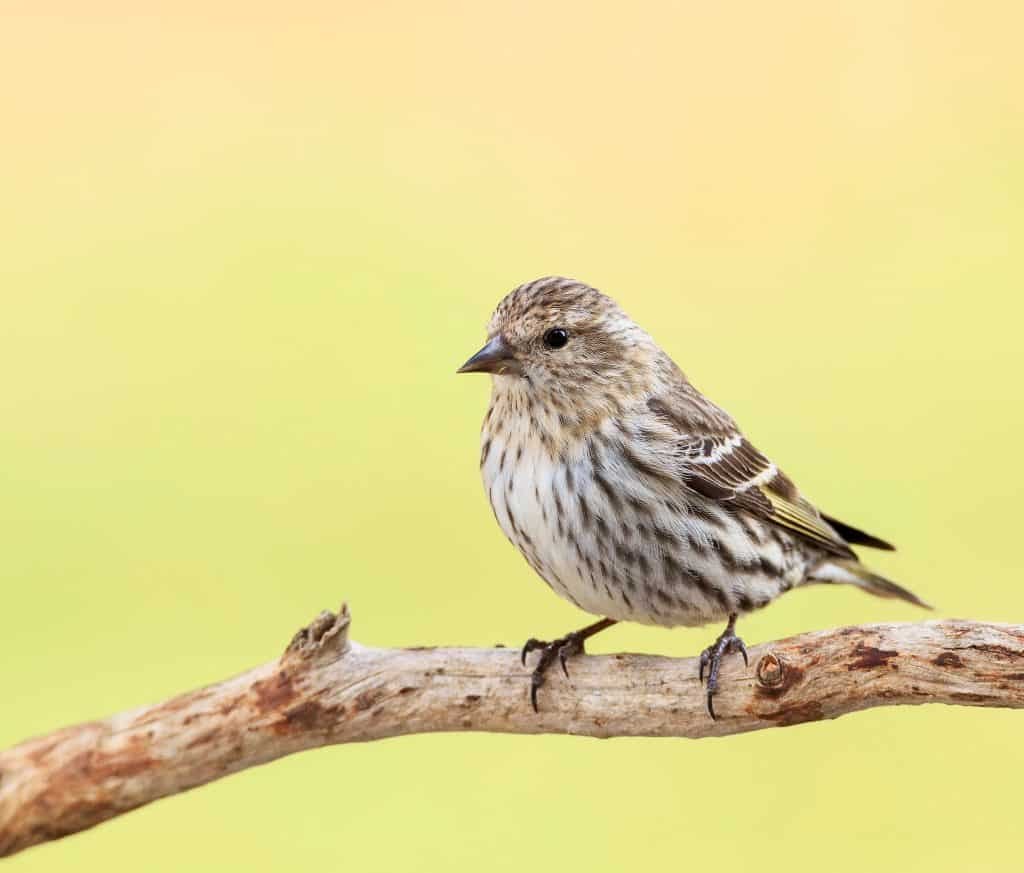
Fun Facts:
- These birds have beaks designed for eating seeds and, as the name suggests, they mostly eat seeds from the pine family. As well as seeds, they have also been known to forage for small insects, these insects are usually aphids.
- Pine Siskins are very similar in size to the American Goldfinch, weighing in at a range of 12-18g. Like other finches, they also have small wingspans of 18-22cm.
Pine Siskins are covered in streaky brown feathers and are somewhat known for their tiny bills. These finches stay in colonies that seem to have a loose structure rather than a complete hierarchy. This colony will stay together even during the mating season.
To court a female, a male will perform his unique mating song from a high up perch, if possible a male will have his own perch.
These birds tend to get a little aggressive towards other individuals of the colony during the winter months. This aggression tends to be surrounding the scarce food sources.
You can see this finch year-round in the north of Ohio but you can only see them in the southern areas of the state during the non-breeding and winter months.
During the winter these birds will greatly expand their search for food and this is when you are more likely to see one visiting your garden. As the name suggests, these birds are a big fan of pine seeds so make sure you have appropriate feeders that are fully stocked.
5. Hoary Redpoll
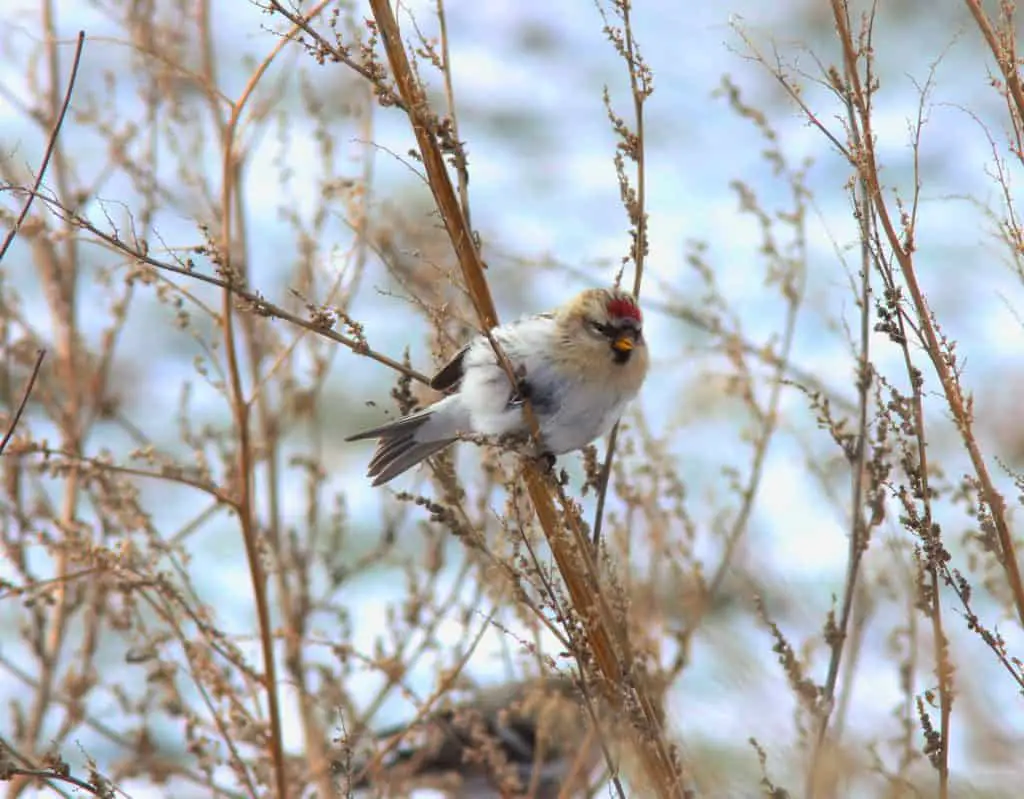
Fun Facts:
- These birds primarily feed on a whole range of seeds. During the summer they have also been seen eating insects and spiders.
- These finches weigh the same as the Common Redpoll, with a range of 11-20g.
The Hoary Redpoll is a finch primarily covered in white and grey feathers. Males of the species have a small patch of red feathers on their heads.
During their courting, males will sing to the females and then will proceed to feed any receptive females to solidify the courtship.
As with most finches, the females will be the ones to build the nests during the breeding season. This nest looks a little bit like a large cup made of woven grass. These finches are seemingly monogamous but not many studies have been conducted to confirm this.
Hoary redpolls are not as common in Ohio and are only seen in the north of the state and in winter. These birds are less receptive to bird feeders but they will visit them in the winter when food is scarce. Stock your bird feeders with nyjer seeds if you want to attract a flock.
6. Cassin’s Finch
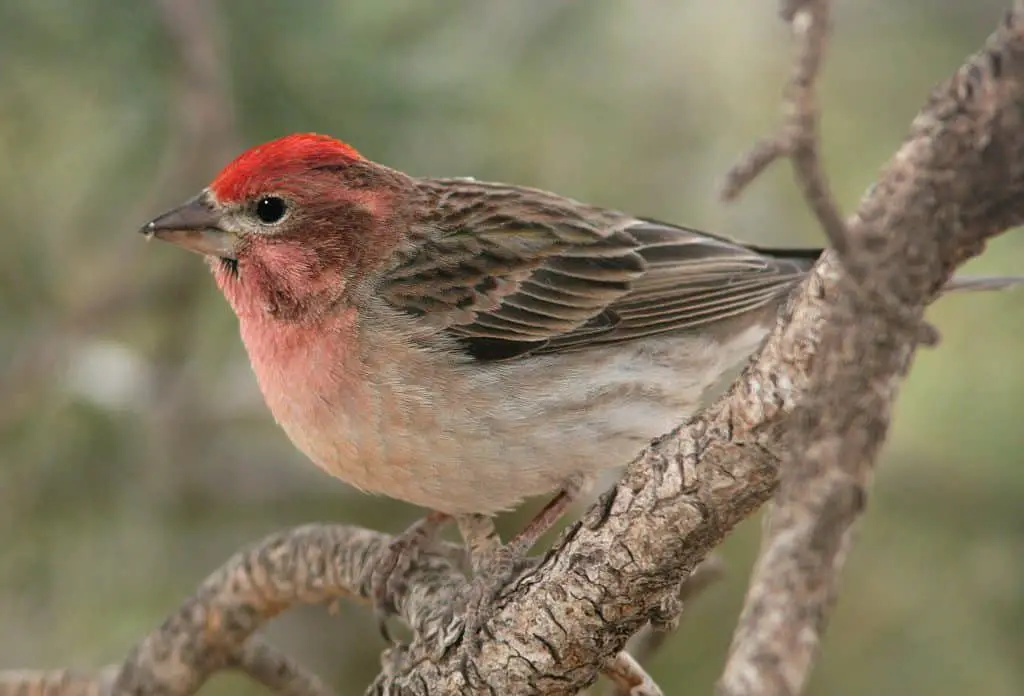
Fun Facts:
- These birds primarily feed on seeds, however they do eat insects when they are available.
- These finches are slightly larger than the others, weighing in at 24-34g.
Male Common Redpolls have a frosty red plumage and a red head, females have the red heads but no red on their plumage. During courtship, a male will display to a female by flying in slow circles whilst producing a mating call.
Males have also been known to feed the females during courting after they peck each other’s bills.
When it comes to nesting, females will be the ones to both pick the nesting site and build the nest. These finches will build their nests from material such as twigs and grass.
You can see these finches all across the state of Ohio but usually only in the winter months. Make sure to keep your feeders out and stocked in winter as this is when the Common Redpoll is most likely to visit. Your feeders will need to hold small seeds, nyjer seeds are a favourite of theirs.
7. Common Redpoll
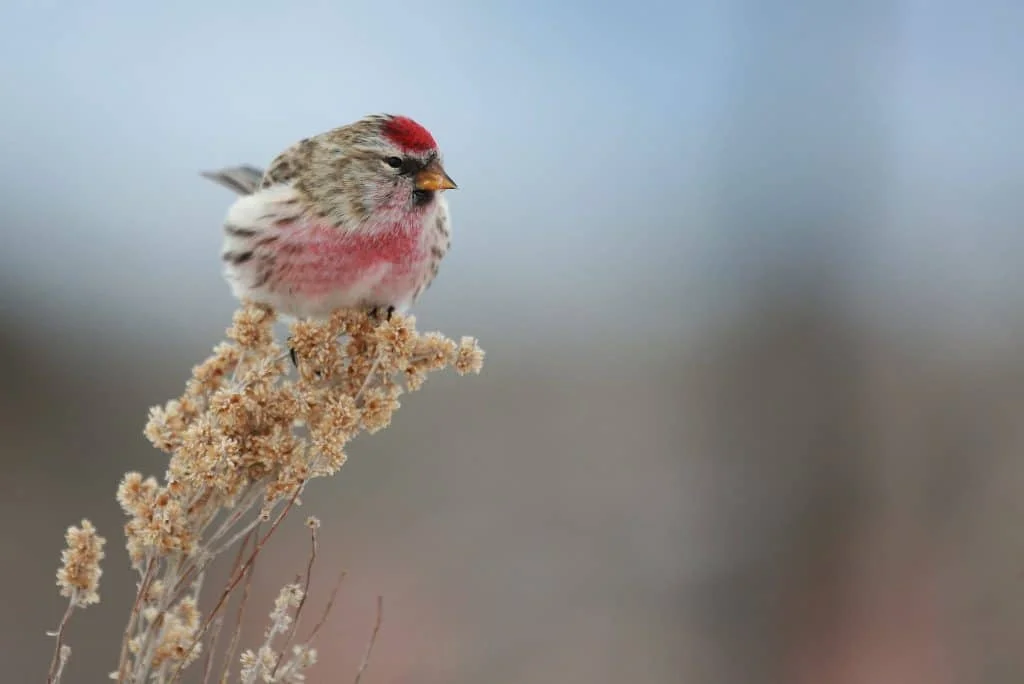
Fun Facts:
- These birds only have very small bills meaning they can only eat tiny seeds.
- They are average sized for a finch, weighing 11-20g.
Male Common Redpolls have a frosty red plumage and a red head, females have the red heads but no red on their plumage.
During courtship, a male will display to a female by flying in slow circles whilst producing a mating call. Males have also been known to feed the females during courting after they peck each other’s bills.
When it comes to nesting, females will be the ones to both pick the nesting site and build the nest. These finches will build their nests from material such as twigs and grass.
You can see these finches all across the state of Ohio but usually only in the winter months. Make sure to keep your feeders out and stocked in winter as this is when the Common Redpoll is most likely to visit.
Your feeders will need to hold small seeds, nyjer seeds are a favourite of theirs.
8. Red Crossbill
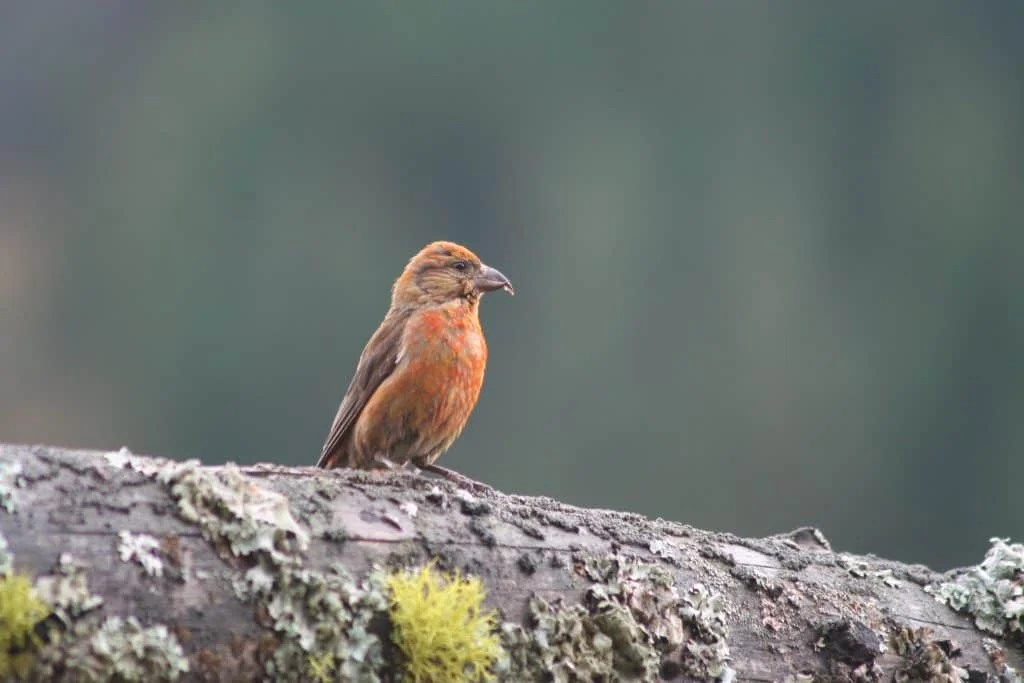
Fun Facts:
- The Red Crossbills mostly feed on seeds, particularly pine seeds. During the summer they will also sometimes eat insects.
- Due to their varied and unstudied sizes, there is no average weight range for this bird.
The Red Crossbill looks much like the name would suggest. They have a body that is covered in deep red feathers and a grey, curved bill that crosses over itself.
These finches will form very large flocks of up to 1000 individuals and sometimes other species, and these flocks will stay together even in the breeding season.
Breeding pairs of these birds will roost close to each other in the flocks. Red Crossbills are monogamous during the breeding season, only mating with one other bird in the flock.
Red Crossbills are seen all throughout Ohio. However, they are only in the north of the state year-round whilst they are only in the south during the winter months.
These birds are not frequent garden visitors so you will be very lucky if you attract one of them. Make sure to utilise seed feeders and fill them with pine seeds. Keep them stocked in winter as this is when they are most likely to visit.
9. White-Winged Crossbill
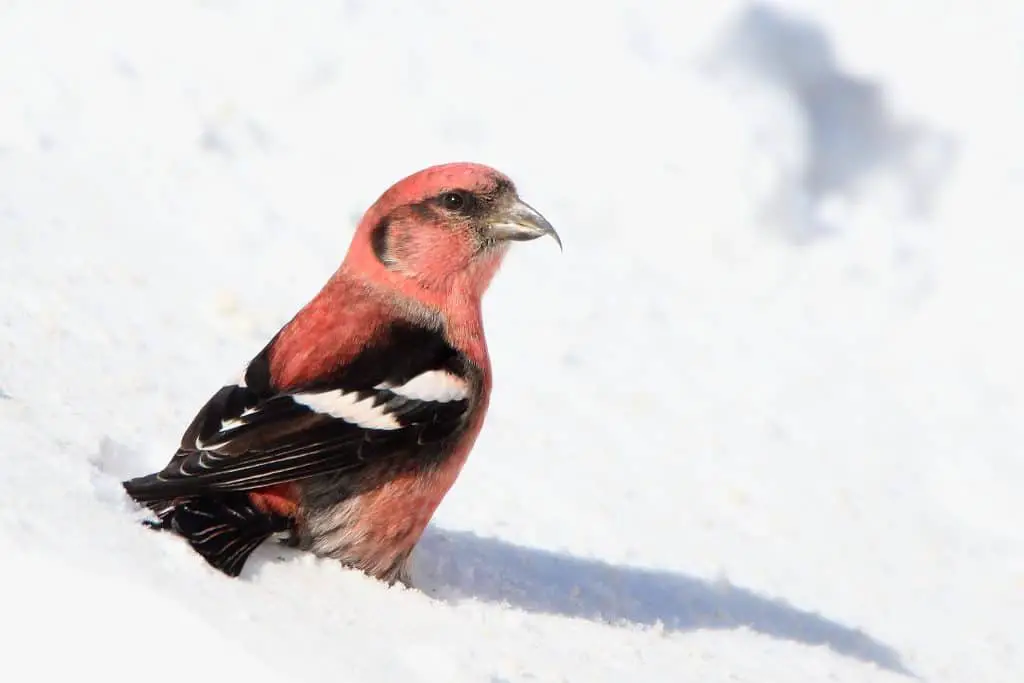
Fun Facts:
- These birds mostly eat seeds throughout the year but have been known to eat insects in the summer as well.
- These birds are on the larger side of average for finches and weigh 22-28g.
Much like the Red Crossbill, these birds look very similar to their names. They have a small bill that crosses over and they have very distinct white tips on the edge of their black wings which they use to help with courting. Males have deep red feathers on their heads and their bellies as well.
These birds will occasionally perform courting displays in groups of males, they will all sing their mating songs perched on some branches.
If the female likes their song the next step is for the male to feed her. Males of this species are the ones who raise the young and take care of the eggs.
During this time the female will mate with other males to increase the flock’s offspring.
Like the Red Crossbill, the White-winged Crossbill is only in the north of Ohio year-round whilst it will only go to the south in the winter months.
These finches don’t often go to gardens and bird feeders, but they will occasionally in winter when food sources are scarce. Make sure to have feeders appropriate for holding seeds and keep them stocked well in the colder months

More Articles.
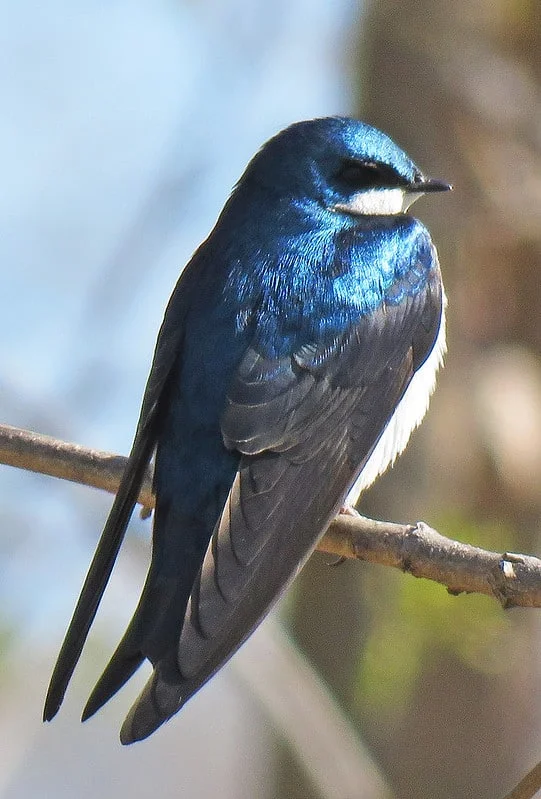
North American Birds with Blue Wings (13 Species with Pictures and Sounds)
North America is filled with many wonderful birds with blue wings – in fact, there
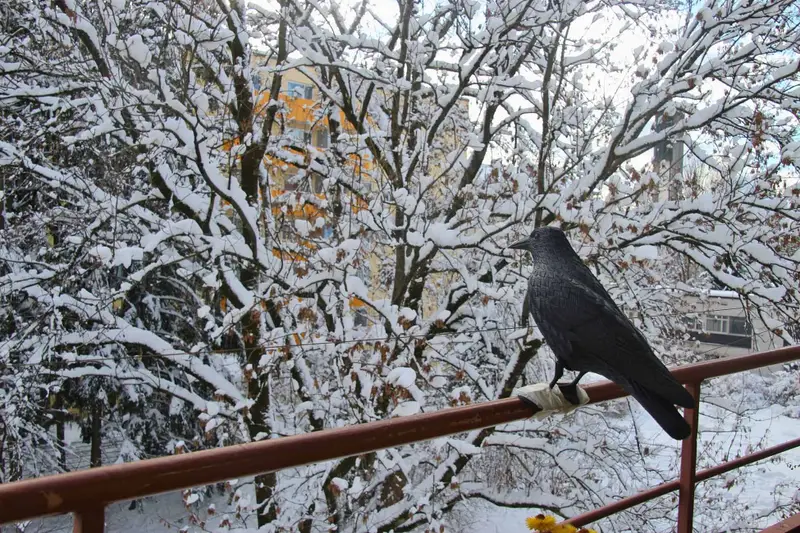
How to Attract Birds to a Window?
All birds can be attracted to a window feeder. Some will require bright colors to

Cardinals are one of the most beautiful birds around and are known to delight birdwatchers

About Us
We are avid bird-watchers who recently retired, allowing us more time to travel the world. Fortunately, we have managed to visit numerous countries around Europe, Asia, and America. Watching and photographing birds has been a passion for many years and we are making the most of the extra time on our hands!
